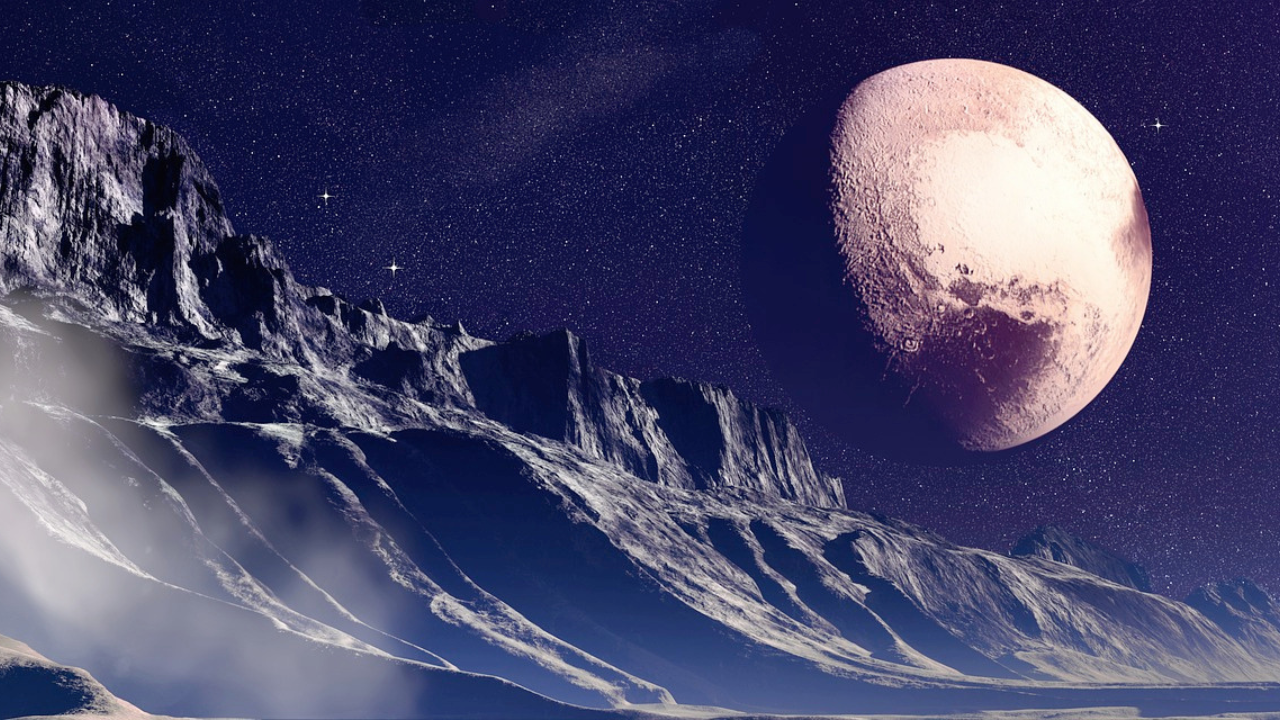
Pre-reading questions:
I will read each question. Then, please answer them.
講師がそれぞれの質問を読むので答えましょう。
- Do you know the main chemical substances found on the moon’s surface?
- Are scientists interested in studying the chemical composition of the moon?
Vocabulary:
I will read the words, meanings, and sample sentences. Then, repeat after me.
単語、意味、例文を読みます。講師に続いて音読しましょう。
- key /kee/
- result /ri-ZUHLT/
- knowledge /NOL-ij/
- evolution /ev-uh-LOO-shuhn/
- reshape /ree-SHEYP/
[adjective] – important or significant
A key player was missing from the soccer team.
[verb] – to happen or exist because something else has happened
Not getting enough sleep can result in feeling tired all day.
[noun] – understanding of or information about a subject that you get by experience or study
She has a lot of knowledge about animals.
[noun] – a gradual process of change and development
The evolution of technology has made life easier.
[verb] – to change the character or organization of something
The company had to reshape its business strategy to adapt to the new market trends.
Article reading:
Please read the whole article. Then, I will check your pronunciation and intonation.
記事を音読しましょう。講師はあなたの発音とイントネーションを確認します。
The James Webb Space Telescope has made a key discovery on Charon, Pluto’s largest moon, by detecting carbon dioxide and hydrogen peroxide on its surface for the first time. Published in Nature Communications on October 1, 2024, this finding builds on previous data from NASA’s 2015 New Horizons mission, which revealed water ice on Charon. The moon is located in the distant and frigid Kuiper Belt, over 3 billion miles from the sun. Researchers suggest hydrogen peroxide forms due to radiation interacting with water molecules, while carbon dioxide may result from external impacts. These chemicals were detected using the advanced infrared sensors of the Webb telescope, which were more sensitive than previous instruments. This discovery enhances scientists’ knowledge of Charon’s composition and may provide deeper insights into how distant moons and planets develop. Understanding the chemical makeup of celestial bodies like Charon is important for studying the evolution of the outer solar system, and the findings could potentially reshape existing theories about the formation of such objects.
True or False:
Read the sentences and identify if they are true or false based on the article.
文章を読んで、記事に基づいて正誤を答えましょう。
- The James Webb Space Telescope detected carbon dioxide on Charon for the first time.
- Hydrogen peroxide was discovered on Charon in 2015 by the New Horizons mission.
- Charon is Pluto’s largest moon.
- The Kuiper Belt is located close to the sun.
- The Webb telescope has advanced infrared sensors that are more sensitive than earlier instruments.
Fill in the blanks:
Choose the correct word from the table, then fill in the blanks.
適切な言葉を選んで空欄を埋めましょう。
| key | result | knowledge | evolution | reshaped |
- The ______ of the internet has transformed the way we communicate.
- Recent events have ______ the way people think about working from home.
- Eating too much junk food can ______ in health problems.
- The company is searching for a ______ member to join its leadership team.
- His ______ of history helped him win the quiz.